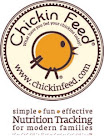
MeterCategories
|
Link Click Tip
When clicking on a link in a post, right click the link and select "open in new window". This keeps your current page open and the new link will open in a new window.
Search This BlogThe BasicsBlog Archive |

Savings Garden
a little of this and a little of that and a whole lot of savings.
| Grocery Store Basics | 8/18/2008 |
|
Filed under:
Basics,
Grocery Store
|
|
Slashing your grocery bill
To truly see savings at the grocery store it will take about 3 months or so. A one-month snap shot of your spending is not going to give you an accurate picture. You need analyze how much you are currently spending, track sales cycles, get organized, make a plan to cut your grocery budget and stick to it. The process will go a lot more smoothly if the whole family is on board. Small habits that eat at the budget add up. Sticking to a list and curbing impulse buying is key to success. Since every household is different cutting your budget means different things to each one. Make your goals realistic for your family needs. Start out by trying to cut back by $100.00. The next month try $200.00. I can say I have been able to work up to cutting my budget in half and am working to cut back even more by being smart about my purchases.
Pay attention to your circulars
To save money at the grocery store you need to understand your grocery store sales. Sales usually run 7 days before prices change. The day before the new sales start, you should receive each stores new ad in the mail. If you don't get the ads by mail you should be able to view them online the first day of the new sale.
You want to match up weekly sales with your coupons for better savings. As part of your plan to save money take time every week to go through all your grocery ads and list out any items that are on sale that you need. Your not just looking for what you need that week but what items have the best prices. Match these items up with any coupons that you have. And if you can, try and plan your meals for the week around what is on sale. That's not to say that what you normally eat needs to change, it means that if you were planning on making a pork chop dish but you don't have pork chops in the freezer and pork chops aren't on sale that you move on to other dishes that you have ingredients for or are on sale.
Plan
a weekly meal plan. This will help you stay on course, use what you have on hand and help limit sabotaging extra trips to the store where you are likely to pick up extra stuff you may want but not need.
CouponMom dot com is a free site (you do need to register) that tells you what is on sale at your local store, if there is a coupon for the item and what percent savings it is. Currently the site does not track sales cycles but it can really help in putting your weekly grocery list together. Grocery Game dot com is another site you can use for help however, they charge a small fee. Personally I feel you can get the same result using your sales flier and the Coupon Mom site to get the same result for free.
Try and shop only once a week. Since the sales usually change weekly, this will allow you to take advantage of weekly sales and cut down on impulse buying. Take advantage of multiple store sales. Keep a cooler or cool bag (found in grocery stores) in the car to keep things cool or frozen until you get home. A lot of grocery chains are near each other. If they're not then you need to way out the cost of gas versus the shopping savings.
Understanding Sales Cycles
Grocery Store items usually go on a 12 - 13 week sales cycle. This means that about every 13 weeks an item will be at its lowest selling price or its 'rock bottom' price. This is when you want to buy and use any coupons you have for the item(s) and stock up to maximize savings. The idea is to buy more than you need on sale so that when you do run out you won't have to pay full price. You can go to your storage and pull out another jar or box that you bought on sale at the 'rock bottom' price. Be careful when first starting to stockpile, it can easily bust your budget. Even if its a great price if you can't afford extra or your family won't use it, don't buy it.
So how do you know if an item is at its 'rock bottom' price or just first round sales prices known as 'phantom sale' price? You need to track the sales or create a price book. Make a list of the most common items you buy. Write down the price that you purchased the item for, what the size/quantity/price per unit is and the store purchased from . Now keep track of the items weekly prices over the next 3 months. This will give you a good idea of what the lowest price the item will go for.
When stores run sales for buy "x" amount of product for "x" $ amount remember, you don't have to buy the quantity listed in order to get the savings unless it states on the flier or in-store sales tag that you do. Example: 2 liter soda bottles are on sale for buy 10 for $10.00. You don't have to buy 10 bottles of soda to get the $1.00 per item price. Purchasing 2 bottles will still only cost $1.00 each. If you aren't sure, ask an employee. They are there to help.
Try to be brand flexible. You save the most by buying what is on sale. Ask yourself, if your favorite toothpaste isn't on sale, will your family use the brand that is?
Another tip, try and shop alone. Family members are usually budget busters.
Save money by shopping for all your toiletry needs at drugstores. This is known as playing the drugstore game (more details in Drugstore basics). Use the extra money to buy your perishables.
Traffic Feed



0 comments:
Post a Comment